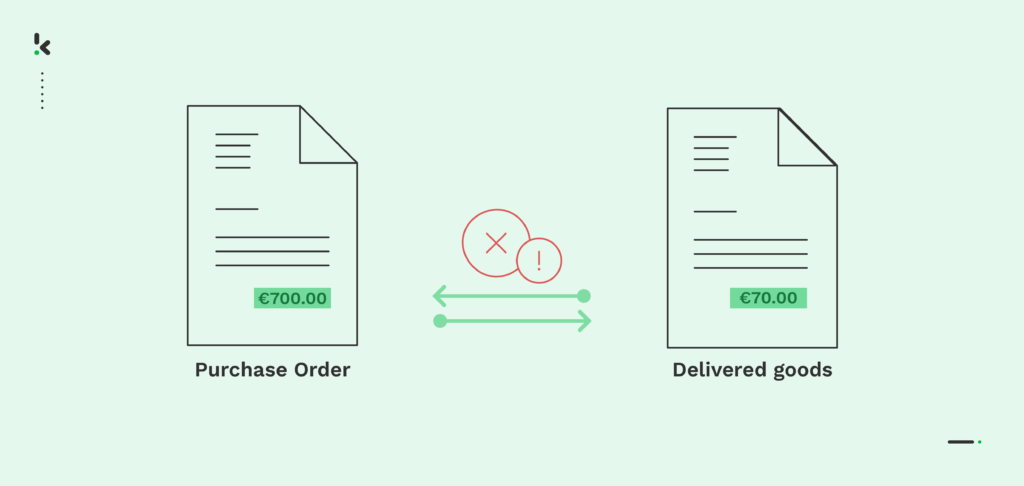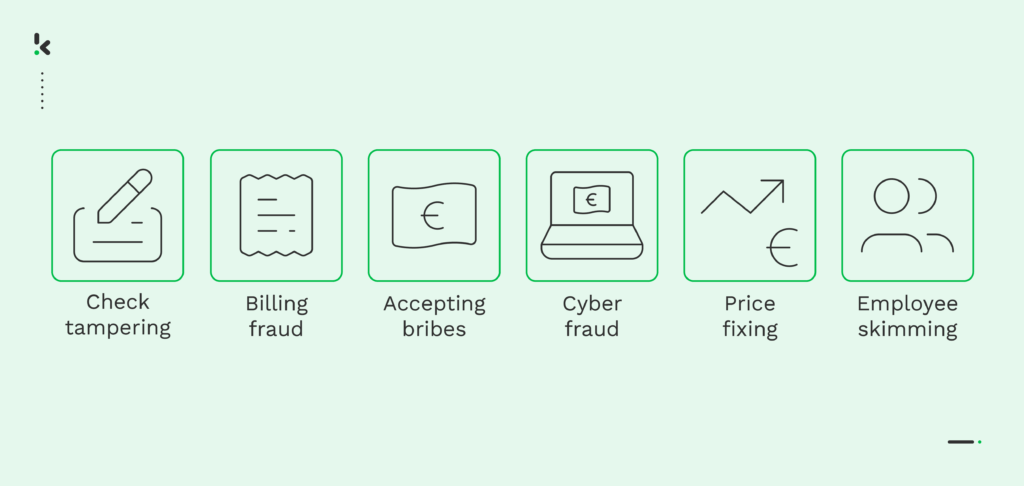

Fraudsters are always finding new ways to scam businesses, no matter how advanced technology gets. One of the biggest threats today is vendor fraud, and it’s growing fast. A 2025 Trustpair report revealed that 69% of US companies were targeted by vendor fraud, up from 47% the year before.
Vendor fraud usually comes from one or more sources, and if not caught early, it can lead to huge losses for businesses.
That’s why it’s so important for businesses to understand vendor fraud and learn how to prevent it. Only then can they protect themselves from these attacks.
So, how can businesses spot and stop vendor fraud? In this blog, we’ll break down what vendor fraud is, how it affects businesses, and the best ways to prevent it.
Let’s start!
Key Takeaways
- Vendor fraud is on the rise, with schemes such as billing fraud, check tampering, and cyber fraud becoming more common and sophisticated.
- Small businesses are at higher risk due to limited resources, but even larger companies can fall victim to complex fraud.
- Preventing fraud requires a multi-step approach, including strong vendor management, employee safeguards, and invoice matching.
- Technology can streamline fraud detection, with tools like Klippa SpendControl automating processes and flagging suspicious activity to keep your business protected.
Want to Skip Straight to the Steps? Click here to dive directly into the actionable steps to prevent vendor fraud.
What is Vendor Fraud?
Vendor fraud refers to illegal activities aimed at personal gain, typically carried out by vendors, employees, or a combination of both. It is usually targeted at the Accounts Payable (AP) of a company by faking a vendor or recipient’s account information to redirect payments.
Fraud attempts are often conducted by the following parties:
- One or multiple employees
- One or multiple vendors
- Collaboration between vendor(s) and employee(s)
- An external entity that modifies a vendor’s payment information but is unknown to everyone
You can see that the multiple options of collaborations that make vendor fraud possible are adding complexity to the problem. So how does that impact businesses?
The Impact of Vendor Fraud on Businesses
Generally, businesses with poor security measures within their invoice management are at risk and most impacted by vendor fraud. Typically, these businesses tend to be small to medium-sized organizations as they depend on smaller employee teams that manage financial transactions.
Smaller teams often don’t have strong controls or robust checks in place, either because the budget is not available or because they underestimate the risk of vendor fraud. Because of the smaller team size, oftentimes one employee is in charge of the whole invoice processing function, which makes it very tempting and easy to manipulate financial records.
Of course, this doesn’t mean that larger organizations aren’t at risk. But with their larger amount of resources, bigger staff, and capabilities, they are more likely to have checks and controls in place that lower the risk of vendor fraud.
In general, as organizations grow, they comply with more laws and regulations that allow them to prevent fraud. This makes it increasingly harder for scammers to pull off fraudulent schemes. It is still important to keep in mind that fraudsters are also becoming more sophisticated, so it isn’t out of the question that even larger organizations become the victims of complex fraud schemes.
Shocking real-life examples show how vendor fraud can cost businesses millions of dollars. For example, a business called Utz Quality Foods paid $1.4 million to a vendor for products that were never actually received. In another case, the telecommunications administrator of the Lincoln Land Community College forged his superior’s signature to authorize payments, which allowed him to steal over $700.000.
We want you to be able to recognize vendor fraud so that you can protect your business. This is why we will have a look at different fraud schemes next.
Common Vendor Fraud Schemes to Watch Out For


There are different vendor fraud schemes that put businesses at risk. Here are some of the most common ones, though this list isn’t exhaustive.
Check Tampering
Check tampering is happening quite frequently. Employees or third parties intercept a check and either sell it on the darknet or alter it to deposit the money into their own bank account.
Billing Fraud
Billing schemes are executed by faking an invoice for payment (also known as invoice fraud) that isn’t actually owed and is then paid unknowingly. This happens by either altering a valid one or faking the whole invoice.
Accepting Bribes
Bribes and kickbacks are also known as procurement fraud. Usually, it happens when vendors, employees, or a mix of both work together to commit fraud in any phase of the procurement process.
Here are a few examples of how that can look like:
- Overbilling for goods or services
- A buyer doesn’t receive the agreed-upon number of goods
- Duplicate invoice to charge twice for the same goods or services
- Employees being bribed by vendors during the contract negotiation process in exchange for kickbacks
- Vendors collaborate with each other to manipulate the procurement process
Cyber Fraud
Cyber fraud is conducted in many ways. One way is to steal money through emails, by hijacking software, or by phishing attempts. Businesses that manage transactions through a computer (so basically, all businesses) are especially vulnerable to cyberattacks.
Price Fixing
Price fixing is often done with the help of internal employees of a business. Vendors collaborate with each other to set a minimum contract price. Like this, businesses have to pay more regardless of which vendor they choose to work with.
Employee Skimming
Employee skimming can be conducted in many forms. Some are more complex than others, such as corporate credit card fraud. A few examples are listed below:
- Writing false checks
- Stealing a few dollars/euros every time a sale is made
- Stealing debit or credit card information
- Stealing and cashing the checks of colleagues
Businesses are at high risk of being scammed by any of the above-mentioned fraud schemes. Therefore, it is important to identify vendor fraud as quickly as possible and find effective ways to prevent it. How to do that will be discussed next.
How to Identify and Prevent Vendor Fraud
There are several ways that allow businesses to identify and prevent vendor fraud. Some measures can be applied to the internal practices of an organization, but there are also measures that affect the vendor directly. Let’s have a look at the possibilities:
Step 1: Implement Strong Vendor Management Practices
It is wise to have precautions and vendor management practices in place that allow you to measure the potential risk of a vendor. This could look like the following:
- Due diligence on vendors in the enrollment process → This allows you to verify vendor details such as email addresses, contact numbers, contact persons, bank accounts, and more. Here, you have the chance to check that the vendor’s information doesn’t match with any employee’s information or other existing vendors.
- Maintaining a central vendor database → This allows you to have an overview of billing volumes and a separate list of high-risk vendors. If you spot any inconsistencies in payments, it is much easier to track which vendors those come from.
Step 2: Establish Employee Safeguards to Detect Fraud Early
Previously, we already mentioned that vendor fraud is often conducted with the help of one or more employees. That’s why it is important to have employee measures in place that allow you to detect fraud quickly. Effective measures could be:
- Anti-fraud training → Training raises awareness of potential risks but also teaches employees how to act in situations in which they are confronted by fraudulent vendors or colleagues.
- Separation and rotation of employee duties → If tasks most vulnerable to vendor fraud are separated and not conducted by one and the same employee, the risk of vendor fraud is already minimized. It can also help to rotate procurement tasks and perform random check-ins and audits.
- Background checks → Before hiring new employees, it is important to conduct background checks to minimize the risk of hiring scammers.
Step 3: Use Invoice Matching Methods to Verify Payments
Invoice matching is one of the most effective ways to prevent vendor fraud. It is used to match vendor invoices against other documents such as purchase orders (PO), inspection slips, or packaging slips.
There are several ways to do invoice matching, such as two-way matching, three-way matching, and four-way matching. All of the methods add a different complexity, but also a security level to the accounts payable process. How exactly invoice matching is used as a fraud prevention method is explained in the last section of this article.
Step 4: Leverage Technology to Strengthen Fraud Prevention
Leveraging technology can enhance your ability to detect and prevent vendor fraud. Automated systems can help flag suspicious activity, streamline invoice matching, and ensure compliance with security protocols. By investing in fraud detection tools, businesses can create an additional layer of protection and respond faster to potential threats.
By putting these measures in place, businesses can significantly reduce the risk of vendor fraud and protect themselves from costly losses.
Prevent Vendor Fraud with Klippa’s Invoice Matching Solution
Invoice matching is a great way to prevent vendor fraud, especially when done automatically. With software solutions such as Klippa SpendControl, the accounts payable process can be automated in several ways.
Klippa’s software enables you (with the help of OCR) to automatically enter and save data from financial documents such as invoices and purchase orders in your database. Once all the necessary information is extracted from the documents, the matching process is executed in a matter of seconds.
Information on the invoice, purchase order, and other financial documents can be compared and matched. That way, it is much easier to detect information discrepancies and be alerted of a possible fraud case.
Next to invoice matching, Klippa SpendControl can also detect document fraud through EXIF data and copy-move analysis, making it hard for fraudsters to alter an invoice. Additionally, the software is able to detect duplicates, which helps you avoid paying an invoice twice.
At this point, managers or other responsible people have the chance to interfere and prevent vendor fraud from happening. Vendors and/or employees that are involved can be reported, while at the same time, your business is protected from illegal payments.
Do you want to know more about Klippa and how SpendControl can help you prevent fraud using invoice matching? Please book a free demo below or contact one of our experts.
FAQ
Companies are at higher risk if they lack strong security measures in their accounts payable processes or if their teams are small and lack separation of duties. Regular audits, background checks on vendors and employees, and implementing invoice-matching methods can help detect fraud risks early.
To stop vendor fraud, it’s important to implement a multi-step approach: establish strong vendor management practices, educate employees on fraud risks, use invoice-matching techniques, and leverage technology to automate processes and detect suspicious activities.
The best way to prevent duplicate invoices is by using automated invoice matching tools. These tools, like Klippa SpendControl, can automatically flag duplicates in real-time, reducing the risk of paying the same invoice multiple times.
Manual invoice management increases the risk of fraud due to human error. Implementing checks such as separating invoice processing duties, performing random audits, and cross-referencing invoices with purchase orders or receipts can help minimize the risk.